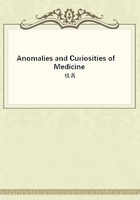
第81章
They menstruated regularly from the age of thirteen. One from long habit yielded instinctively to the other's movements, thus preserving the necessary harmony. They ate separately, had distinct thoughts, and carried on distinct conversations at the same time. They experienced hunger and thirst generally simultaneously, and defecated and urinated nearly at the same times. One, in tranquil sleep, would be wakened by a call of nature of the other. Common sensibility was experienced near the location of union. They were intelligent and agreeable and of pleasant appearance, although slightly under size; they sang duets with pleasant voices and accompanied themselves with a guitar; they walked, ran, and danced with apparent ease and grace. Christine could bend over and lift Millie up by the bond of union.
A recent example of the pygopagus type was Rosa-Josepha Blazek, born in Skerychov, in Bohemia, January 20, 1878. These twins had a broad bony union in the lower part of the lumbar region, the pelvis being obviously completely fused. They had a common urethral and anal aperture, but a double vaginal orifice, with a very apparent septum. The sensation was distinct in each, except where the pelves joined. They were exhibited in Paris in 1891, being then on an exhibition tour around the world. Rosa was the stronger, and when she walked or ran forward she drew her sister with her, who must naturally have reversed her steps. They had independent thoughts and separate minds; one could sleep while the other was awake. Many of their appetites were different, one preferring beer, the other wine; one relished salad, the other detested it, etc. Thirst and hunger were not simultaneous.
Baudoin describes their anatomic construction, their mode of life, and their mannerisms and tastes in a quite recent article.
Fig. 42 is a reproduction of an early photograph of the twins, and Fig. 43 represents a recent photograph of these "Bohemian twins," as they are now called.
The latest record we have of this type of monstrosity is that given by Tynberg to the County Medical Society of New York, May 27, 1895. The mother was present with the remarkable twins in her arms, crying at the top of their voices. These two children were born at midnight on April 15th. Tynberg remarked that he believed them to be distinct and separate children, and not dependent on a common arterial system; he also expressed his intention of separating them, but did not believe the operation could be performed with safety before another year. Jacobi describes in full Tynberg's instance of pygopagus. He says the confinement was easy; the head of one was born first, soon followed by the feet and the rest of the twins. The placenta was single and the cord consisted of two branches. The twins were united below the third sacral vertebrae in such a manner that they could lie alongside of each other. They were females, and had two vaginae, two urethrae four labia minora, and two labia majora, one anus, but a double rectum divided by a septum. They micturated independently but defecated simultaneously. They virtually lived separate lives, as one might be asleep while the other cried, etc.
CLASS V.--While instances of ischiopagi are quite numerous, few have attained any age, and, necessarily, little notoriety. Pare speaks of twins united at the pelves, who were born in Paris July 20, 1570. They were baptized, and named Louis and Louise. Their parents were well known in the rue des Gravelliers. According to Bateman, and also Rueff, in the year 1552 there were born, not far from Oxford, female twins, who, from the description given, were doubtless of the ischiopagus type. They seldom wept, and one was of a cheerful disposition, while the other was heavy and drowsy, sleeping continually. They only lived a short time, one expiring a day before the other. Licetus speaks of Mrs. John Waterman, a resident of Fishertown, near Salisbury, England, who gave birth to a double female monster on October 26, 1664, which evidently from the description was joined by the ischii. It did not nurse, but took food by both the mouths; all its actions were done in concert; it was possessed of one set of genitourinary organs; it only lived a short while. Many people in the region flocked to see the wonderful child, whom Licetus called "Monstrum Anglicum." It is said that at the same accouchement the birth of this monster was followed by the birth of a well-formed female child, who survived. Geoffroy-Saint-Hilaire quotes a description of twins who were born in France on October 7, 1838, symmetrically formed and united at their ischii. One was christened Marie-Louise, and the other Hortense-Honorine. Their avaricious parents took the children to Paris for exhibition, the exposures of which soon sacrificed their lives. In the year 1841there was born in the island of Ceylon, of native parents, a monstrous child that was soon brought to Columbo, where it lived only two months. It had two heads and seemed to have duplication in all its parts except the anus and male generative organs.
Montgomery speaks of a double child born in County Roscommon, Ireland, on the 24th of July, 1827. It had two heads, two chests with arms complete, two abdominal and pelvic cavities united end to end, and four legs, placed two on either side. It had only one anus, which was situated between the thighs. One of the twins was dark haired and was baptized Mary, while the other was a blonde and was named Catherine. These twins felt and acted independently of each other; they each in succession sucked from the breast or took milk from the spoon, and used their limbs vigorously. One vomited without affecting the other, but the feces were discharged through a common opening.